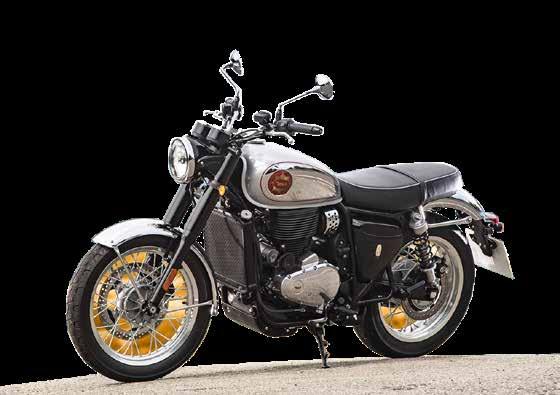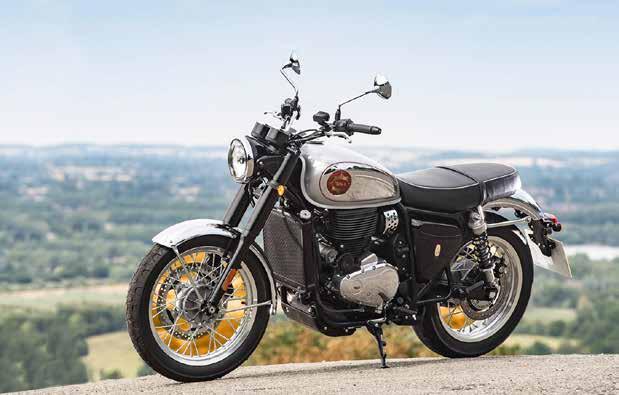
2 minute read
Registrations decline extends into February
BDN analysis of the MCIA February 2023 registration statistics
Cost of living increases of concern
Registrations declined once again in February, falling short of 2022’s tally by 7.6%. However, like January, February is a typically lowvolume registration month, with the difference being just under 400 machines.
Although the cost of living and high interest rates continue to be a concern, the next few months will give a more accurate indication of how the market is performing as the season fully begins.
Recent feedback from dealers suggests that enquiries and forward orders were relatively buoyant in February, with some reporting more muscular activity than last year. However, increasing interest rates have hindered customer finance penetration, with consumers choosing to self-fund instead. Overall, dealers remain cautiously optimistic about the season ahead, with new models due to arrive in dealerships imminently, which is expected to boost demand further.
Stock supply continues to improve, with dealers reporting a stronger position than last year, albeit longer lead times remain on certain models. Demand is stable across the board, but naked, modern classics and adventure machines are particularly sought after.
Paul McDonald Leisure Vehicles Editor
TRADITIONALLY THE WEAKEST pre-season fallow month anyway, February was also bound to be afflicted by a nervous wait to see just how much cost-of-living issues will limit enthusiasm for discretionary leisure purchases going forward. The reception for fresh stock arriving in dealerships, to feed March’s new plate boost, should provide a clearer picture in due course, but remains anybody’s guess at the moment. BDN financial editor Roger Willis reports.
February’s headline numbers were 7.6% down to 4814. Motorcycles actually improved by 5.8% to 3124 but scooters suffered a 21.3% slump to 1379, mopeds sank by 38.9% to just 287 and trikes lost 33.3% on a mere 24.
January’s resurgence for the petrolhead mobility sector petered out, as up-to-125cc registrations fell by 12.7% to 2217, despite input from an even bigger 262-strong dose of Yamaha NMAX 125 fleet fodder. The equivalent up-to-11kW electric mobility contribution was pathetic, plunging by 55.6% to 189. A best showing came from 30 Vmoto Super Soco CPx scooters. The entire battery-electric presence was slashed in half to 220 units, so further discussion of its shortcomings here is a waste of time.

At least, inevitably restricted volumes of larger-capacity machines were a bit more encouraging. The 126-500cc engine band, which includes both more puissant mobility offerings and budget leisure products, was a fairly marginal 1.4% lower at 817. However, the 501-750cc range grew by 19.7% to 487 and 751-1000cc bikes put on 21.1% to 487 too.
Respective best-sellers in these three slots were retro Royal Enfield Classic 350 and BSA Gold Star steeds from India, and BMW’s S1000 RR cooking version of its superbike family (aimed at penurious punters who can’t afford the M1000RR’s full bells and whistles). Over-1000cc muscle was 1.5% down to 586, led as usual by the premium-priced BMW R1250 GS Adventure. Total internal combustion hegemony across all capacity classes was reduced by 3.7% to 4594.
The MCIA’s best-selling brands chart in February was very much a mixture of showroom stock paucity or otherwise, alongside stuttering demand. Honda managed to crawl onto the podium’s top step, despite 30.1% fewer machines registered at 936. In contrast, runner-up Yamaha stacked on 69.4% to 630. That convenient NMax scooter fleet accounted for 41.6% of them. BMW Motorrad took third spot, 55.3% up to 323.
The new BSA Gold Star just lost out to its Royal Enfield rival in the modern retro class


KTM flaunted a 65.5% increase to 288, while Lexmoto dived by 43.1% to 210 – narrowly beating Triumph’s 18.4% retreat to 209. Royal Enfield followed, 10.8% higher at 175.

